An unripened type of cheese originating from specific Mediterranean cultures, halloumi cheese is known for presenting a semi-hard texture with a rather high melting point and a general source milk of both goat and sheep’s milk, creating a rather dense and strong cheese perfect for direct frying or grilling.
However, certain situations and instances may require that halloumi cheese be substituted with a similar product so as to retain its function and flavor in a recipe, with such things like dietary restrictions or a lack of availability calling for other cheeses to take its place.
The best halloumi cheese flavor substitutes are Monterey jack cheese, cheddar cheese, mozzarella cheese, and feta cheese. The best halloumi cheese texture substitutes are queso fresco, paneer cheese, and Greek/Cypriot Kefalotyri. The best meat replacement substitutes for halloumi cheese are seitan meat substitute, tofu meat substitute, as well as various mushroom meat substitutes.
Why Does Halloumi Cheese Require Substitution?
Though it is important to remember that no substitute ingredient can ever truly replicate the texture, flavor and function of halloumi cheese in its entirety, it is an unfortunate reality that using the semi-hard cheese is not always a suitable choice, with a variety of other food products and cheese products existing that may replicate one or several characteristics normally found in halloumi cheese.
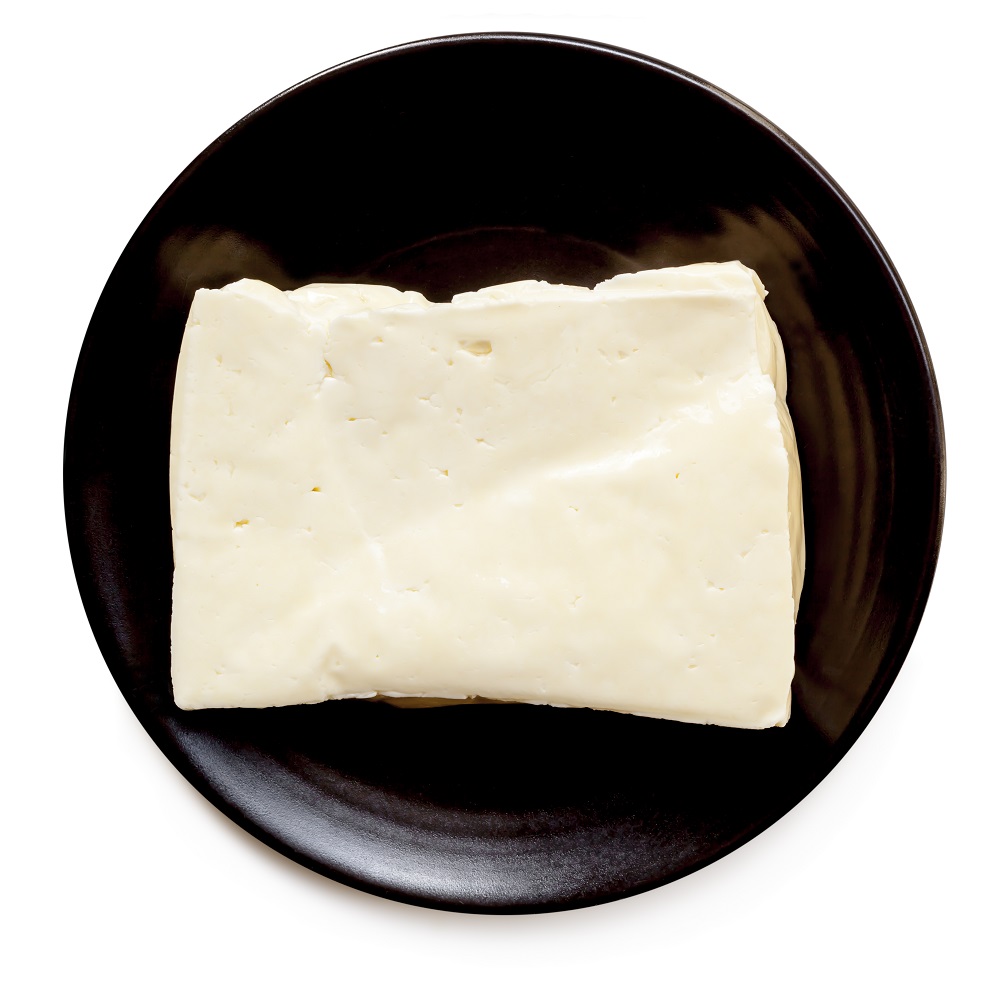
Halloumi cheese may require substitution for a variety of reasons, such as a lack of availability in the local grocery stores (especially in the United States), a certain intolerance to sheep or goats milk, the fact that halloumi may present a rather substantial price tag in certain parts of the world or even just simple personal preference towards other cheese products.
Flavor Substitutes for Halloumi Cheese
When consumed for its taste, halloumi cheese is noted to possess a somewhat tangy and moderately salty flavor similar to that of other unripe goat cheeses, of which may intensify depending on the particular age and method of cooking the halloumi cheese will undergo.
Certain other types of cheese, whether sourced from non-cow’s milk or otherwise, are capable of presenting a similarly tangy and salty flavor profile, making them similar if not nearly indistinguishable in most recipes that make up for the difference in flavors through the use of other ingredients.
Monterey Jack Cheese
A classic American cheese easily found throughout most of the western hemisphere, Monterey jack cheese and a few of its cousins can impart a similarly tangy and slightly salty flavoring that is generally seen as less intense than that of halloumi cheese, of which may or may not be an advantage depending on the particular recipe in which halloumi cheese is being substituted in.
Monterey jack cheese is best used as a halloumi cheese substitute in such things like sandwiches or salads wherein the cheese is not subjected to direct heat for significant periods of time.
This is due to the fact that, unlike halloumi cheese, Monterey jack cheese has a relatively low melting point due to its high percentage volume of butterfat, making it an excellent substitute to halloumi cheese in flavor but not in function or texture.
Cheddar Cheese
Perhaps one of the most common types of cheese anywhere on the globe, cheddar cheese is known for an ever so slightly tangy flavor profile with an underbelly of saltiness that is said to pair quite well with much of the same foods that halloumi cheese is normally paired with.
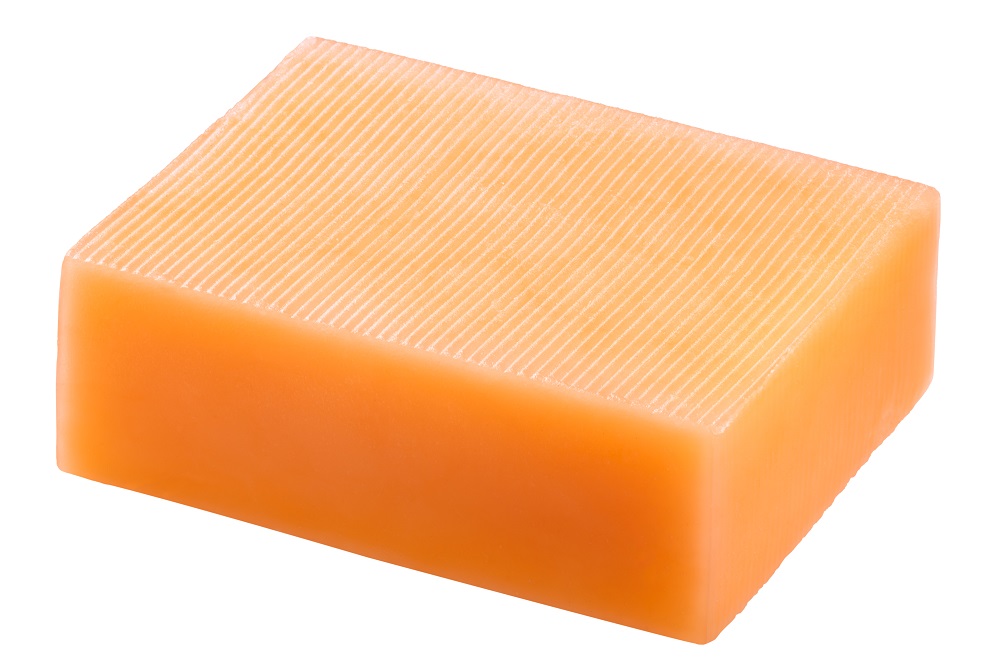
In terms of substitution for halloumi cheese, cheddar possesses a slightly higher percentage of lipid content per unit of volume, meaning it retains a slightly lower melting point, though certain types of cheddar such as that which has undergone aging or brining will be able to withstand similar temperatures as halloumi.
Mozzarella Cheese
Another extremely common cheese throughout much of the world, mozzarella in its fresher form presents a similar tanginess to halloumi cheese, with certain brands adding a mixture of other cheeses or specific chemical flavoring compounds so as to also impart a distinctly savory taste that can compare quite well to halloumi cheese’s saltiness.
Unlike halloumi cheese, however, mozzarella cheese is generally seen as a very fluid and stringy cheese, with a relatively low melting point that places it at the opposite end of the temperature tolerance spectrum to halloumi cheese.
This has the unfortunate consequence of making mozzarella cheese useless as a meat substitute or in any sort of recipe that requires that the halloumi cheese substitute be grilled, fried, or otherwise subjected to direct heat so as to firm it up.
Feta Cheese
Also derived from goat’s milk, feta cheese is capable of presenting a similarly salty flavor to halloumi cheese, though this saltiness may be somewhat more overpowering in certain instances, and as such is best used in smaller volumes so as to avoid unbalancing the flavor profile of a dish or recipe.
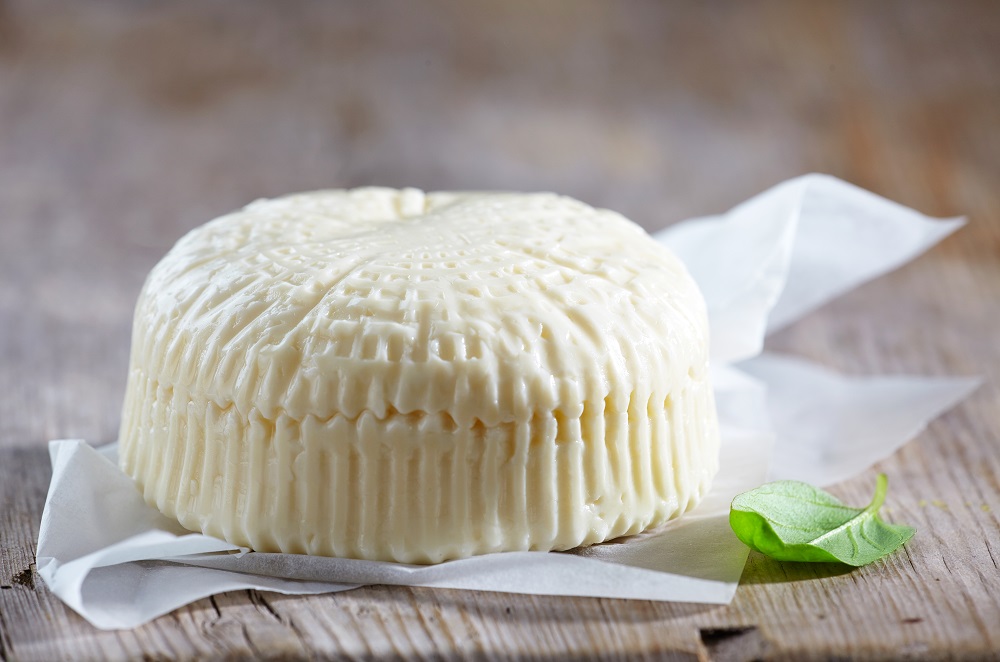
Texturally, feta cheese is somewhat less moist and significantly more crumbly than the otherwise stretchy and pliable halloumi cheese, making it less resistant to the effects of direct heat and as such may not be suitable for the same purposes that halloumi cheese would normally be used in.
However, if used in its raw form, feta cheese makes an excellent flavor substitute for halloumi cheese, especially when accounting for its somewhat stronger salty taste notes.
Texture Substitutes for Halloumi Cheese
A primary hallmark of halloumi cheese is its distinctly rubbery or “squeaky” texture, alongside its characteristically high melting point, making it excellent for the purposes of directly grilling and frying, of which will both intensity the taste of halloumi cheese as well as impart an almost meat-like texture, of which is one of its primary uses in cooking.
Certain other types of cheese can present similarly high melting points with textures quite close to that of halloumi cheese, making substituting this particular characteristic of halloumi quite easy, especially when combined with a suitable flavor substitute so as to recreate the entire experience of consuming halloumi cheese.
Queso Fresco
Originating from Mexican cuisine, queso fresco is usually a combination of cows milk alongside cows milk before subsequently being curdled with rennet and similar acidic ingredients so as to create a semi-firm textured cheese with distinctly tangy and slightly salty flavors.
These flavors alongside the somewhat “squeaky” texture of aged queso fresco serve to create an excellent substitute to halloumi cheese, both in flavor and in texture, making queso fresco perhaps one of the best all around substitutes to halloumi cheese in practically every situation.
A primary drawback is the fact that improperly treated or relatively young queso fresco may possess a somewhat softer texture than halloumi cheese with a similarly lower melting point, making it texturally different in this specific circumstance.
Paneer Cheese
Another white cheese curdled with the use of acidic ingredients, paneer cheese originates from Indian cuisine wherein it is prized for its stretchy and heat-resistant texture, as well as its relatively high melting temperature, making it an excellent addition to curries and pan-fried meals that require it to retain its shape.
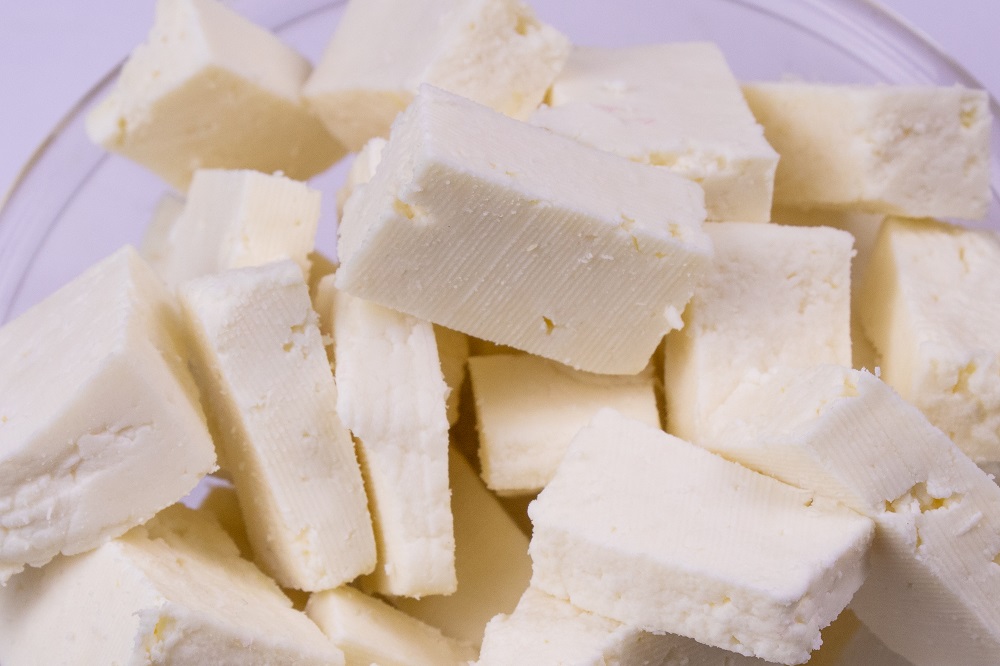
As a halloumi cheese substitute, paneer is not only similar in texture and melting point but also in flavor, though the finer taste notes of paneer cheese may be somewhat different, and its primary tangy body of flavor is said to be somewhat milder than that of halloumi.
Paneer cheese may substitute halloumi cheese in a direct one to one ratio, and in practically any recipe that requires a suitable textural substitution be used.
Greek/Cypriot Kefalotyri
Made from much the same sources as halloumi cheese (goat or sheep’s milk), kefalotyri is another all-around excellent substitute both in terms of flavor and texture, with kefalotyri possessing similarly high melting points and a rubbery or firm texture that develops a flakiness around the external portion of the cheese.
From a flavor perspective, kefalotyri also presents similar tangy and salty flavor notes as halloumi cheese, occasionally even eclipsing the latter in terms of intensity, and as such must be tasted prior to usage so as to prevent it from overpowering or unbalancing the flavor profile of the recipe.
Meat Replacement Substitute Products for Halloumi Cheese
The particularly high melting point and subsequent textural integrity created by grilling or frying halloumi cheese makes it an extremely popular meat substitute, especially in such things like sandwiches or quesadillas that can benefit from the tangy and somewhat rich flavor that halloumi cheese imparts alongside its textural similarity to meat.
Though this property is generally rare to find in other sorts of cheese, many potential meat replacement substitutes for halloumi cheese do exist, oftentimes taking the form of non-cheese food products that replicate the same textural similarity and consistency as halloumi cheese itself.
Seitan Meat Substitute
A form of processed and hard packed wheat gluten, seitan is an excellent meat substitute normally used as an alternative to soybean-based meat substitute products so as to recreate the texture and flavors of such animal meats like beef and chicken.
As a halloumi cheese meat substitute replacement, seitan may be used in much the same ways halloumi would normally be, with the hard-packed wheat gluten product capable of withstanding the temperatures of grilling or deep frying in a similar manner to the goat’s cheese product itself.
However, it must be noted that seitan does not normally possess much of a flavor profile at all, and is generally seen as neutrally flavored, unlike the tangy and somewhat salty tastes normally found in halloumi cheese.
As such, it is important to season and flavor seitan prior to cooking so as to best recreate halloumi cheese’s purpose and capacity in a recipe.
Tofu Meat Substitute
Otherwise referred to as bean curd, tofu is considered the eminent meat substitute product, being used in practically any form of meatless dish and as such also being capable of acting as a halloumi cheese meat replacement substitute in practically any situation or recipe.
Tofu is generally graded into specific textures that estimate exactly how it would behave when placed under the stresses of cooking and similar culinary processes, with firm to very firm tofu being the closest possible textural recreation of halloumi cheese that has been fried or grilled.
Just like seitan, however, tofu has an extremely mild taste that may even be considered neutral or flavorless when paired alongside other ingredients in a recipe, and as such must be flavored and seasoned prior to its addition into the ingredient list of a recipe so as to best recreate the flavors of halloumi cheese.
Various Mushroom Meat Substitutes
If instead choosing to use a mushroom based meat substitute in a recipe, the particular similarity in texture and consistency to halloumi cheese as a meat substitute depends on the method of preservation and the particular species of mushroom being used, meaning that certain types of mushroom meat substitutes such as oyster or enoki may not be as suitable a replacement.
Fortunately, unlike tofu or seitan, most types of mushrooms present a somewhat savory and salty flavor profile, requiring only the addition of a tangy seasoning or additional ingredient so as to recreate the flavors of halloumi cheese, making mushrooms as a meat replacement substitute for halloumi cheese an excellent choice.
References
1. KAMINARIDES, S., ROGOTI, E. and MALLATOU, H. (2000), Comparison of the characteristics of halloumi cheese made from ovine milk, caprine milk or mixtures of these milks. International Journal of Dairy Technology, 53: 100-105. https://doi.org/10.1111/j.1471-0307.2000.tb02670.x
2. Standard, I. D. F. 152 (1991) Milk and milk products. Determination of fat content. General guidance on the use of butyrometric methods. International Dairy Federation, Brussels, Belgium.
3. Moatsou G. “Cheese: Technology, Compositional, Physical and Biofunctional Properties:” A Special Issue. Food Magazines. 2019;8(10):512. Published 2019 Oct 18. doi:10.3390/foods8100512
4. Gibbs, Paul; Morphitou, Ria; Savva, George (2004). “Halloumi: exp orting to retain traditional food products”. British Food Journal. 106 (7): 569–576. doi:10.1108/00070700410545755.



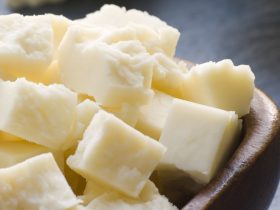

Hi, I'm Dom
Dom Eats was started to help other people fall in love with food. While cooking can feel intimidating, it doesn't have to be.